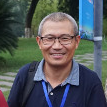The New Science of Cities and Urban Growth Sustainability
A special issue of Sustainability (ISSN 2071-1050). This special issue belongs to the section "Sustainability in Geographic Science".
Deadline for manuscript submissions: closed (15 January 2023) | Viewed by 19150
Special Issue Editors
Interests: geographic information science; spatial modelling; remote sensing theory and methodology; spatiotemporal modelling of urban growth; grassland ecosystem; coupled impacts of human dynamics and environmental change on resource management and ecosystem recovery; land-use and land-cover changes
Special Issues, Collections and Topics in MDPI journals
Interests: city science; big data analytics; sustainable urban planing; city structure and dynamics; the livingness of space
Special Issues, Collections and Topics in MDPI journals
Special Issue Information
Dear Colleagues,
Urban sustainability is a comparatively new research theme, but has attracted a broad spectrum of audiences. Like the three-pillar ecosystem model of the environment, economy, and social system, many notions concerning ecosystem sustainability are dominant in urban sustainability studies. This Special Issue provides a unique opportunity for examining urban growth sustainability from the perspectives of geographical science and complex urban system modeling.
Cities are not simply places, but complex systems of networks and flows, which can be examined better by using urban complexity theories. About 36 years ago, Professor Michael Batty developed the idea that cities might grow through self-similar generating processes like fractals from bottom cells to city structures (Batty and Longley, 1994). Batty has argued that cities should be examined as complex systems (Batty, 2007) through the lens of “the new science of cities” (Batty, 2013), and that the future of sustainable cities can only be invented by human societies (Batty, 2018).
The new science of cities encompasses a suite of evolving computational theories and geospatial technologies, including geo-computational simulations powered by the cellular automata model, multi-agent-based model, and artificial intelligence for assessing how land-use changes impact urban growth sustainability. These tools build on Geographic Information Systems (GIS), remote sensing, and spatial statistics for analysing dynamic urban changes and their spatiotemporal variations. This Special Issue invites new applications, theoretical exploration, conceptual innovation, algorithmic advancement, big data analytics, and computational learning in these geo-computation fields concerning current urban structures and future growth. This Special Issue intends to provide peer-reviewed opportunities for collecting the most prominent research findings for analysing, modelling, and planning sustainable cities. Submissions may include research papers, reviews, or case studies, as long as they are related to urban growth sustainability.
References:
Batty, M.; Longley, P. Fractal Cities; Academic Press: London, UK, 1994.
Batty, M. Cities and Complexity; MIT Press: Cambridge, MA, USA, 2007.
Batty, M. The New Science of Cities; MIT Press—Journals, 2013.
Batty, M. Inventing Future Cities; MIT Press—Journals, 2018.
Prof. Dr. Yichun Xie
Prof. Dr. Bin Jiang
Guest Editors
Manuscript Submission Information
Manuscripts should be submitted online at www.mdpi.com by registering and logging in to this website. Once you are registered, click here to go to the submission form. Manuscripts can be submitted until the deadline. All submissions that pass pre-check are peer-reviewed. Accepted papers will be published continuously in the journal (as soon as accepted) and will be listed together on the special issue website. Research articles, review articles as well as short communications are invited. For planned papers, a title and short abstract (about 100 words) can be sent to the Editorial Office for announcement on this website.
Submitted manuscripts should not have been published previously, nor be under consideration for publication elsewhere (except conference proceedings papers). All manuscripts are thoroughly refereed through a single-blind peer-review process. A guide for authors and other relevant information for submission of manuscripts is available on the Instructions for Authors page. Sustainability is an international peer-reviewed open access semimonthly journal published by MDPI.
Please visit the Instructions for Authors page before submitting a manuscript. The Article Processing Charge (APC) for publication in this open access journal is 2400 CHF (Swiss Francs). Submitted papers should be well formatted and use good English. Authors may use MDPI's English editing service prior to publication or during author revisions.
Keywords
- agent-based modelling
- big data and urban analytics
- cellular automata urban simulation
- complexity city science
- computational urban modelling
- fractal cities
- geographical simulation
- spatial analysis
- urban and regional sustainability
- virtual geographical urban environments






